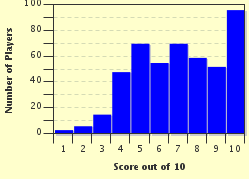Quiz Answer Key and Fun Facts
1. When did Ejnar Hertzsprung and Henry Russell develop the first Hertzsprung-Russell diagram?
2. What quantities were plotted on the vertical and horizontal axes of the first HR Diagram?
3. As well as observational HR diagrams, stellar physicists have found it useful to construct theoretical HR diagrams. What is the main difference between these two types of HR diagrams?
4. One of the most obvious features of the HR diagram is called the main sequence. Where does it appear in the diagram?
5. In the top right corner of the HR diagram is a region called the horizontal branch. What is the main fuel consumed in the fusion reactions occurring in the cores of stars in this region?
6. What (somewhat unimaginative) name is given to the empty area of the HR diagram to be seen between the top of the main sequence and the horizontal branch?
7. What kind of stars are found in the instability strip of the HR Diagram?
8. At the bottom left of the HR diagram is a nearly-horizontal band of stars, similar in brightness despite their varying temperatures. What kind of stars are primarily found in this region of the diagram?
9. When the HR diagram was first published, it stimulated others to use it as a basis for describing stellar evolution. Who published 'The Internal Constitution of the Stars' in 1926, attempting to provide an evolutionary mechanism to explain the HR diagram?
10. Where on the HR diagram will you find our sun?
Source: Author
looney_tunes
This quiz was reviewed by FunTrivia editor
CellarDoor before going online.
Any errors found in FunTrivia content are routinely corrected through our feedback system.

